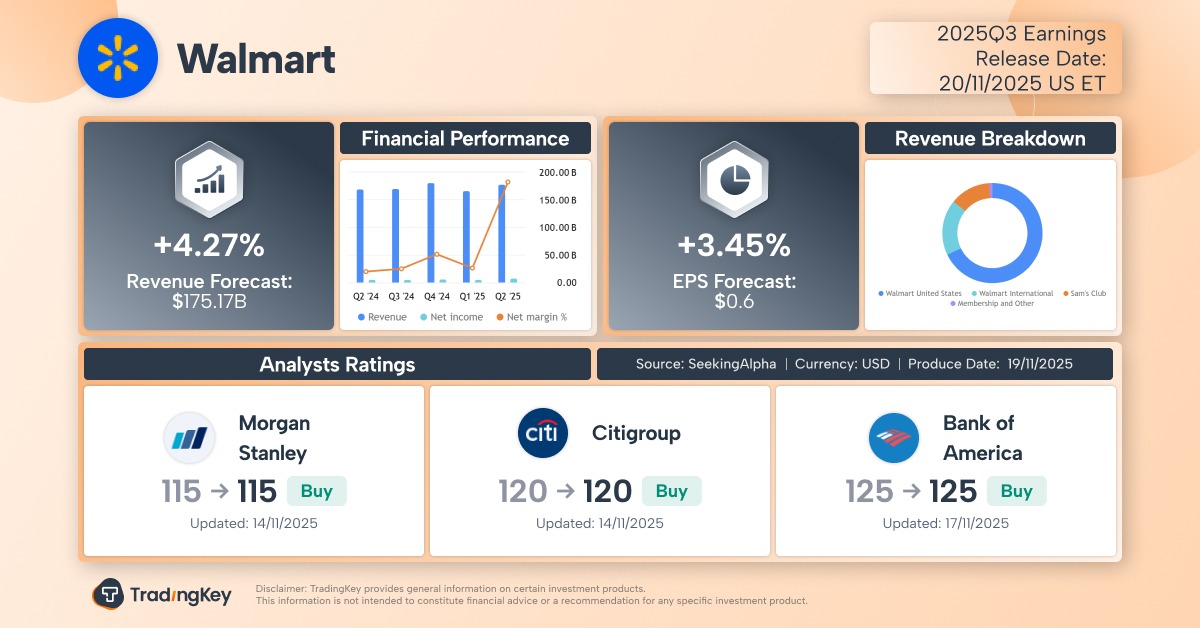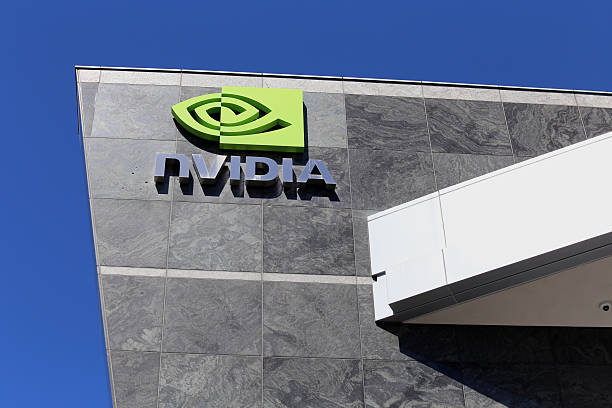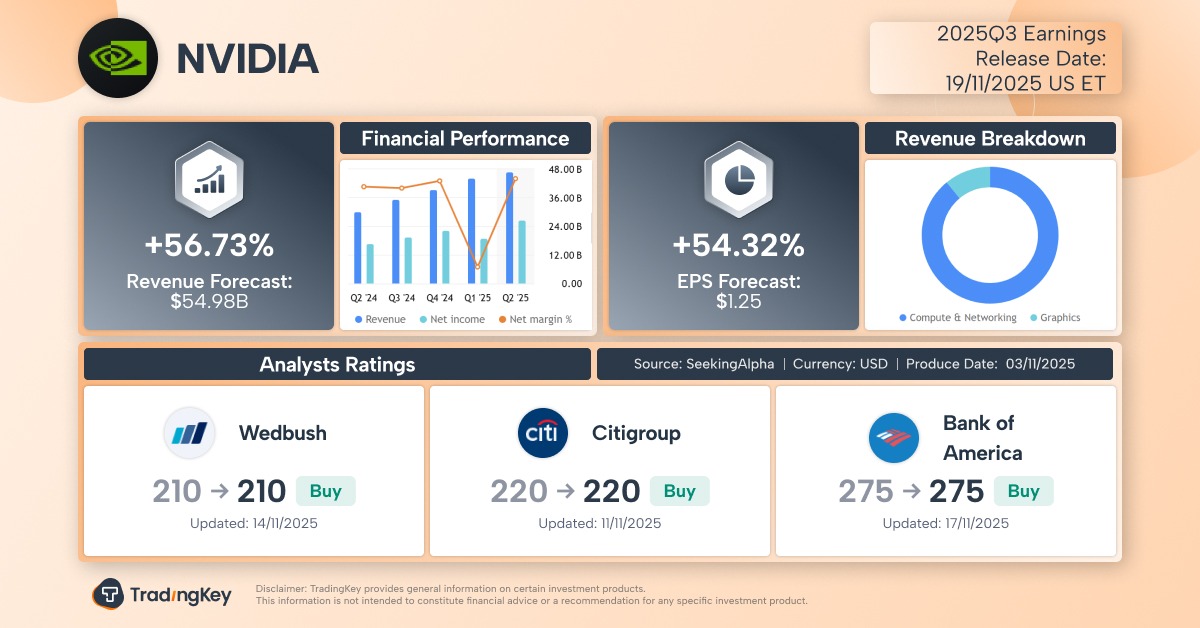Costco Closes 2025 with a Bang: Membership Loyalty Drives Profit Surge


Costco Closes 2025 with a Bang: Membership Loyalty Drives Profit Surge
TradingKey - In a complex macroeconomic environment, Costco delivered robust revenue growth, improved profit margins, and exceeded earnings per share expectations, concluding its 2025 fiscal year on a high note. The company’s membership-driven business model demonstrated enduring resilience.
Financial Highlights
· Revenue: Total fourth-quarter revenue reached $86.16 billion, up 8.1% year-over-year, slightly surpassing market expectations of $86.08 billion. Net sales were $84.43 billion, up 8.0%, with the modest revenue beat resulting in a muted stock price reaction. Fiscal 2025 full-year revenue totaled $275.24 billion, reflecting an 8.17% increase.
· Earnings: Fourth-quarter net income grew 11% to $2.61 billion, with diluted earnings per share of $5.87, a significant improvement from $5.29 in the prior year, beating market expectations of $5.81. Excluding a one-time $0.14 tax benefit from the prior year, earnings growth neared 14%, highlighting Costco’s exceptional operating leverage and cost control.
Core Metrics Performance
Membership: Membership fee income surged 14% to $1.724 billion in Q4, far outpacing the 8% net sales growth. Executive memberships grew 9.3% to 38.7 million, representing 47.7% of paid members but contributing 74.2% of global sales, underscoring the strength and loyalty of Costco’s core business model (renewal rates: 92.3% in the U.S. and Canada, 89.8% globally). While the executive membership strategy drives sales and loyalty through a 2% cashback reward, creating a positive feedback loop, its concentration poses significant risks. Any weakening in this segment could materially impact revenue, making it a critical leading indicator for future financial performance.
Profit Margins: The fourth-quarter gross margin improved by 13 basis points to 11.1%, driven by enhanced fresh food efficiency, increased Kirkland private-label penetration, and supply chain optimization. Operating margin rose 10 basis points to 3.9%, boosting operating income by 9.8% to $3.341 billion, demonstrating Costco’s ability to withstand inflationary pressures.
Regional Performance: U.S. comparable sales grew 5.1% (6.0% adjusted), showing steady but decelerating growth (Q2: 8.3%, Q3: 6.6%). Canada (6.3%, adjusted 8.3%) and other international markets (8.6%, adjusted 7.2%) performed strongly, highlighting growth potential in underpenetrated markets. International market growth is a core pillar supporting Costco’s high valuation, and any signs of slowdown in future earnings could pose significant risks to its valuation.
E-commerce: E-commerce comparable sales surged 13.6% in Q4, with full-year e-commerce revenue exceeding $19.6 billion, up over 15%, significantly outpacing brick-and-mortar growth. This reflects the success of Costco’s omnichannel strategy, transitioning e-commerce from a defensive tool to a growth engine, expanding market potential through member trust in its digital platform.
Earnings Analysis
Costco’s overall comparable sales grew 5.7%, driven by 3.7% traffic growth and a 1.9% increase in average ticket size. In the U.S., traffic grew 3.5%, with ticket size up 1.5%, reflecting Costco’s low-price, high-value model attracting more shoppers and higher visit frequency, signaling market share gains. Compared to competitors like Target, which reported sales declines, Costco’s over 3.5% traffic growth underscores its competitive advantage. Traffic metrics are a stronger predictor of long-term health than short-term sales or margin fluctuations.
However, Costco’s price-to-earnings ratio exceeding 53x, far above the broader market and retail peers, reflects high expectations for its wide moat, loyal membership base, stable performance, and international growth potential. This “priced for perfection” valuation leaves little room for error. Any missteps—such as slowing international growth, declining renewal rates, or margin pressures—could trigger significant stock price corrections. Sustaining growth requires flawless execution in international expansion (notably adding 35 new stores in markets like Sweden, South Korea, and China), deepening e-commerce penetration, and defending executive membership value through exclusive products and enhanced services.
Costco FY2025 Q4 Earnings Preview: Decoding Growth Drivers and Market Bets Amid Sky-High Valuation
TradingKey - Since the release of Costco's fiscal 2025 third-quarter earnings report, its stock performance has slightly underperformed the S&P 500 index. After a significant year-to-date rally, the stock has entered a consolidation phase, exhibiting a contracting triangle pattern, reflecting investor caution ahead of the fourth-quarter earnings report.
Costco has pre-announced that its net sales for the fourth quarter of fiscal 2025 reached $84.4 billion, an 8% year-over-year increase, driven by a 5.7% rise in comparable store sales and robust e-commerce performance. The U.S., Canada, and other international markets saw comparable sales growth of 5.1%, 6.3%, and 8.6%, respectively. E-commerce comparable sales surged by 13.6%, with August alone recording an impressive 18.4% increase, highlighting the effectiveness of Costco’s omnichannel strategy. Market focus will shift from revenue growth to profitability metrics, particularly gross margins and fiscal 2026 guidance, to evaluate whether Costco’s operational strength and defensive business model can continue to justify its valuation exceeding a 50x price-to-earnings ratio.
Key Metrics to Watch
Net Sales: Costco has confirmed in its August sales report that net sales for the 16-week fourth quarter (ending August 31, 2025) reached $84.4 billion, up 8.0% from $78.2 billion in the same period last year. This figure is now a given, eliminating any uncertainty regarding the company’s revenue performance.
Earnings Per Share (EPS): The current market consensus expects Costco’s fourth-quarter EPS to be $5.81, compared to $5.29 in the fourth quarter of fiscal 2024, implying an approximate 9.8% year-over-year growth. This growth expectation slightly exceeds revenue growth, suggesting that the market anticipates the company will achieve operating leverage through effective cost control or a favorable sales mix.
Membership Fees, Renewal Rates, and Growth: Costco’s membership model is the cornerstone of its business, with stable, high-margin membership fee income forming a moat that supports its low-margin operations and price competitiveness. Key metrics include: Membership fee income, expected to show significant year-over-year growth in Q4, driven by new member growth and the September 2024 fee increase, following a 4.6% rise in Q3. Renewal rates, which stood at 92.7% in the U.S. and Canada and 90.2% globally in Q3, are critical, as any fluctuations could raise concerns about customer loyalty. New member growth, particularly the pace of premium Executive Membership sign-ups, which drive higher spending, is a key indicator of market appeal and future potential. Investors should closely monitor these metrics to gauge Costco’s operational resilience and valuation support.
Profitability: Despite strong sales growth, profitability remains under scrutiny due to rising merchandise costs, supply chain volatility, and potential tariff threats impacting Costco’s thin margins. Key metrics include: Gross margin, with investors closely watching year-over-year and sequential changes, where declines or expansions reflect either profit sacrifices or improved pricing power and efficiency; Kirkland Signature brand performance, as its high margins can offset pressures from other categories; and SG&A expense ratio, where efficient cost control is critical to achieving operating leverage and translating 8% revenue growth into higher EPS growth.
E-commerce Business: Costco’s e-commerce business is a growth engine, with Q4 comparable sales soaring by 13.6%. Investors should focus on key metrics: Growth sustainability, whether FY2026 can maintain double-digit growth, with management’s outlook being critical; Digital investments, such as Costco Logistics and “buy now, pay later” programs, which enhance long-term competitiveness but may pressure short-term profits; and Omnichannel integration, how online and offline channels drive traffic and sales synergy, demonstrating strategic effectiveness. Management’s commentary on these metrics will reveal the success of Costco’s omnichannel strategy.
Summary
The market currently presents a notable contradiction: on one hand, the September consumer confidence index continues to decline, with growing concerns about the economy, employment, and inflation; on the other hand, Costco demonstrates robust operational performance. This divergence may suggest that consumers are concentrating their spending at retailers like Costco, which offer the best value on essentials (e.g., food and gasoline), with Costco’s growth potentially coming at the expense of weaker competitors. The upcoming earnings call will provide a valuable opportunity for validation. If management confirms increased foot traffic and market share gains due to heightened consumer anxiety, it will reinforce Costco’s positioning as a “defensive growth stock.” Conversely, any indication that even loyal customers are cutting back on spending could signal broader economic weakness. Costco’s Q4 earnings will serve as a critical catalyst for short-term stock price movements, with investors needing to balance acknowledgment of its strong business model against caution regarding its high valuation.








